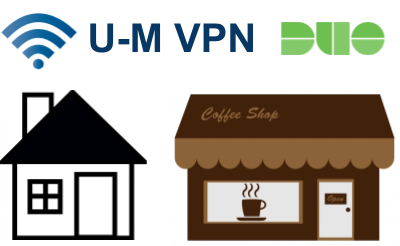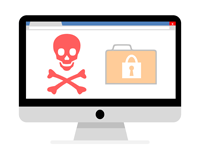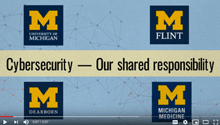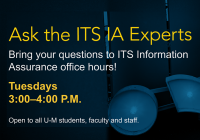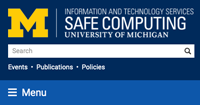President Biden signed a cybersecurity executive order on May 12 that aims to significantly modernize and improve the nation's cybersecurity defenses. It is no coincidence that this order came in the wake of the Solar Winds attack, as well as a ransomware attack that took down a major gas pipeline provider. While the order applies directly to the federal government, it encourages others to follow the government’s lead and "take ambitious measures to augment and align cybersecurity investments with the goal of minimizing future incidents."
According to Sol Bermann, chief information security officer and executive director of ITS Information Assurance (IA), U-M already meets many of the items in the executive order and is well positioned going forward to continue to incrementally improve the U-M security posture. The executive order outlines seven goals:
-
Remove Barriers to Threat Information Sharing Between Government and the Private Sector. U-M engages in multiple threat sharing initiatives with organizations such as REN-ISAC, MS-ISAC, BTAA, and EDUCAUSE and hosts Michigan Intelligence for Threat Negation (MITN). U-M also receives threat feeds from a number of law enforcement groups.
-
Modernize and Implement Stronger Cybersecurity Standards in the Federal Government. The order focuses on practices such as two-factor authentication, encryption, and cloud security. U-M already has Duo two-factor deployed for all faculty, staff, and students, and most centrally managed systems provide encryption. Bermann added, "U-M widely deployed CrowdStrike Falcon advanced endpoint protection early in 2021 and is exploring CrowdStrike’s cloud security offerings."
-
Improve Software Supply Chain Security. "U-M does vendor security-compliance assessments—including asking about secure coding practices—and has done so for years," said Bermann. U-M software developers are expected to follow secure coding best practices. "U-M hopes to benefit from improvements in vendor software security as the industry as a whole hopefully improves in this area," Bermann said.
-
Establish a Cybersecurity Safety Review Board. The governmental board will review lessons learned from major incidents and provide recommendations for improving cybersecurity and incident response practices. "U-M's academic campuses and Michigan Medicine engage, as appropriate, in lessons-learned activities," Bermann pointed out. These activities result in recommendations for improving cybersecurity and incident response practices.
-
Create a Standard Playbook for Responding to Cyber Incidents. U-M has standard policies, practices, and playbooks for responding to cyber incidents. "These are reviewed and refreshed periodically," noted Bermann.
-
Improve Detection of Cybersecurity Incidents on Federal Government Networks. U-M has a number of threat detection capabilities, ranging from vulnerability scanning to security operation center activities, to advanced endpoint protection tools, such as CrowdStrike Falcon for U-M units.
-
Improve Investigative and Remediation Capabilities. U-M has logging capabilities that allow for investigation and remediation activities and asks units to maintain unit-specific logs, as well as work with IA to get them into the ITS log repository when feasible.



